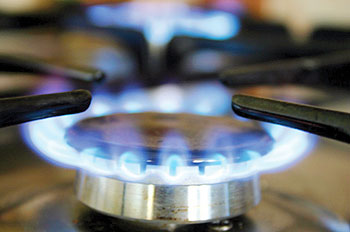Natural gas was formerly seen as a useless product that was either released into the atmosphere or flared off in the process of extracting petroleum crude oil. However, from the middle of the 20th century, natural gas now accounts for over 20 percent of the world’s energy consumption. The demand for Natural gas has been growing fast.


Natural gas was formerly seen as a useless product that was either released into the atmosphere or flared off in the process of extracting petroleum crude oil.
However, from the middle of the 20th century, natural gas now accounts for over 20 percent of the world’s energy consumption. The demand for Natural gas has been growing fast.
An environmentally friendly and efficient energy source, natural gas is the cleanest-burning conventional fuel, producing lower levels of greenhouse gas emissions than heavier hydrocarbon fuels such as coal and oil. Historically, natural gas also has been one of the most economical energy sources. Natural gas fuels electric power generators, heats buildings and is used as a raw material in many consumer products, such as those made of traditional plastics.
The International Energy Agency predicts that the demand for natural gas will grow by approximately 44 percent by 2035. Natural gas is a growing segment of today’s energy portfolio.
Although world gas resources are plentiful, the regions with natural gas surpluses are often oceans away from the greatest demand. Companies like Chevron have evolved the capabilities to meet the challenges of developing resources and delivering natural gas to markets where its use is growing.
Many companies have engaged in every aspect of the natural gas business, i.e. production, liquefaction, shipping, regasification, pipelines, marketing and trading, power generation, and gas-to-liquids
Natural Gas has the following advantages; Natural gas burn more cleaner than fossil fuels – 45% less carbon dioxide with coal and 30% less than fossil fuel. Does not pollute the underground water or pollute the ground when it is burned.
Natural gas is use to heat homes, to generate fire for cooking, run with your hot water heater to produce hot water, and to run different appliances. People without natural gas pipe in their homes can use small tanks containing natural gas. Natural gas burn without releasing soot or sulphur dioxide.
Natural gas can also be used as a fuel to run cars, trucks and airplanes. It burns cleaner than diesel and gasoline. Natural gas can be used to create some plastics, paints; it can produce ammonia for fertilizers and hydrogen.
Natural gas is widely available. Natural gas is lighter than air, if there is a leak, it is likely that it will dissipate and it is less likely to create an explosion when compare to propane gas that is much heavier than air.
In spite of the many advantages, Natural gas has the following disadvantages; Natural gas is another type of fossil fuel, which means it is non-renewable and still releases carbon dioxide (CO2).
Need long pipelines, need big tankers on land and sea for transportations. Need specialized fuel tank in vehicles for transport that carries some safety concerns. The long pipes disrupt the ecosystems. Natural gas is cleaner than coal and petrol but it is still releasing carbon dioxide that contributes to global warming.
It can be expensive to use natural gas if your home is not properly insulated. Some electrical appliances need high voltage which are expensive to install and dangerous. If there is a leak, it may cause fire or explosion.
In some areas, methane excess from natural gas is burnt into the atmosphere because it is uneconomical to transport to external markets. When using natural gas in cars or trucks, the mileage from natural gas is lower than of petrol or diesel.
eddie@afrowebs.com


